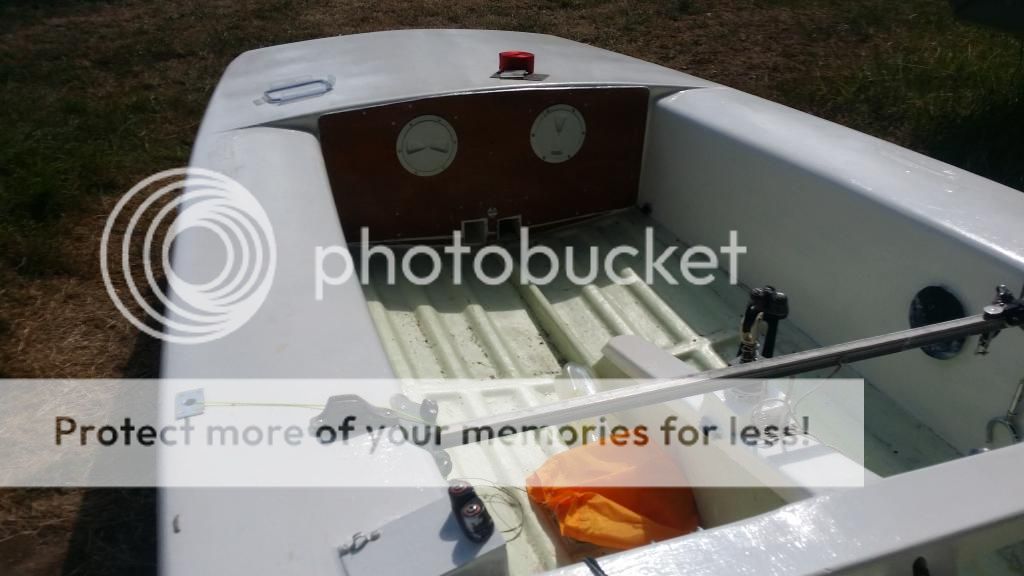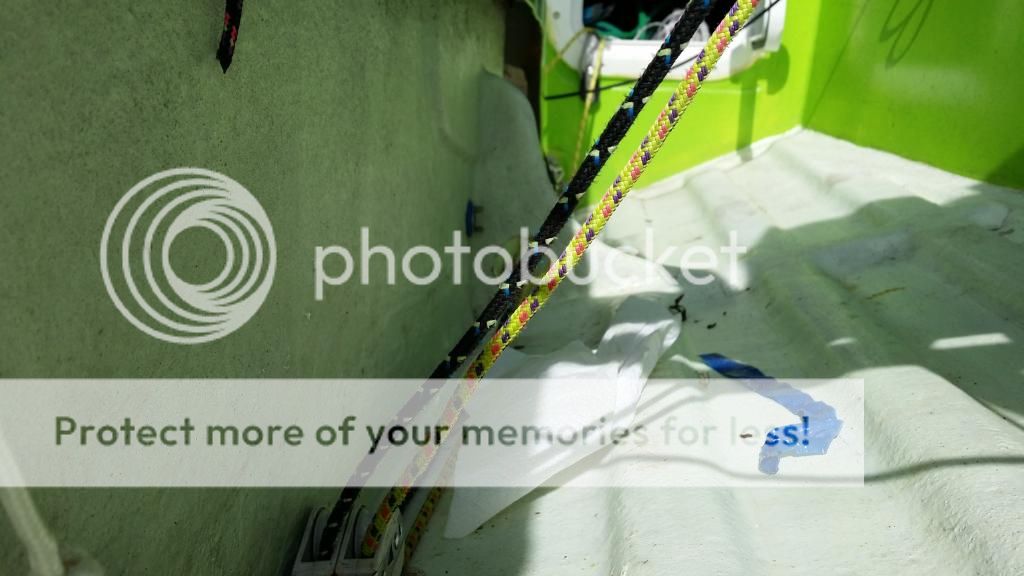Greenheart
Well-Known Member
Thanks for all recent contributions.
I would have added this thread to an earlier entry I started a while ago, about making a flat draining deck in the Osprey, so that everything from chocolate bars to small passengers don't end up inevitably rolling into the deep areas either side of the centreboard case, which are often awash...
...but that thread was hijacked by chaps concerned about other matters, and their unsolicited hubbub left the deck-question barely addressed.
I can still see that plywood is vulnerable to water ingress...although water contact would only be very temporary - there'd have to be an unwelcome weight of water in the bilge before the ply deck was continually immersed. I have this year applied several coats of epoxy to 12mm marine ply sections which I had planned to use as supports on my trolley...
...and while the support principle wasn't a huge success, the resistance of the epoxied plywood to moisture seems to have been absolute. So I confess I'm still open to the idea.
I wouldn't even be considering ply over hardwood slats, except that if I use ply, the drainer-grooves I cut needn't separate the sections - so overall, the deck would retain rigidity.
Whereas creating individual slats, each mounted on carefully-carpentered support-pieces to spread the load over irregular curves in the deck below, will challenge my ability.
I must visit my local timber merchant. One look at nice iroko planks and I may rise to the challenge. I'm aware that slotted ply sections can't possibly look as good as real wood.
What thickness of iroko would suffice, assuming I'm able to fashion "risers" every 12 inches or so to lift the slats off the cockpit floor below?
I would have added this thread to an earlier entry I started a while ago, about making a flat draining deck in the Osprey, so that everything from chocolate bars to small passengers don't end up inevitably rolling into the deep areas either side of the centreboard case, which are often awash...
...but that thread was hijacked by chaps concerned about other matters, and their unsolicited hubbub left the deck-question barely addressed.
I can still see that plywood is vulnerable to water ingress...although water contact would only be very temporary - there'd have to be an unwelcome weight of water in the bilge before the ply deck was continually immersed. I have this year applied several coats of epoxy to 12mm marine ply sections which I had planned to use as supports on my trolley...
...and while the support principle wasn't a huge success, the resistance of the epoxied plywood to moisture seems to have been absolute. So I confess I'm still open to the idea.
I wouldn't even be considering ply over hardwood slats, except that if I use ply, the drainer-grooves I cut needn't separate the sections - so overall, the deck would retain rigidity.
Whereas creating individual slats, each mounted on carefully-carpentered support-pieces to spread the load over irregular curves in the deck below, will challenge my ability.
I must visit my local timber merchant. One look at nice iroko planks and I may rise to the challenge. I'm aware that slotted ply sections can't possibly look as good as real wood.
What thickness of iroko would suffice, assuming I'm able to fashion "risers" every 12 inches or so to lift the slats off the cockpit floor below?



